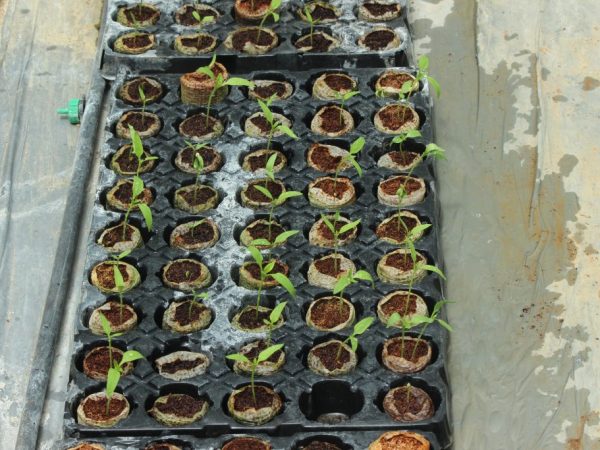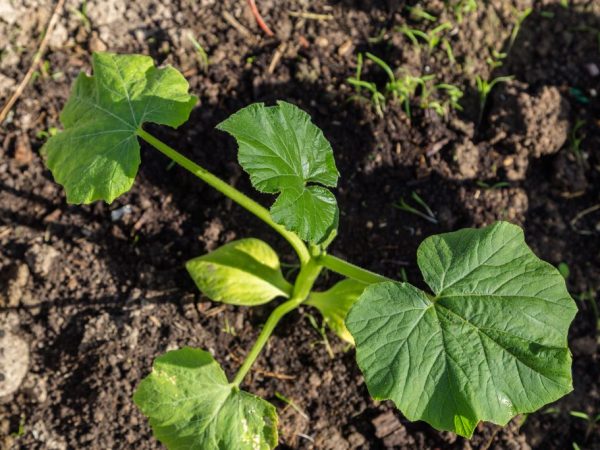Planting zucchini according to the lunar calendar
If you plant zucchini according to the lunar calendar and follow the rules for their cultivation, you can get a rich harvest.

Planting zucchini according to the lunar calendar
In addition, according to the schedule, you can determine on what days to carry out work in the garden.
The influence of the moon on the development of plants is quite powerful - it has been proven by scientists. If the seeds are sown during its growth phase, then the squash will be strong and less susceptible to disease.
When to plant zucchini for seedlings
Before starting sowing, you should find out the weather forecast and take into account the properties of the climate in a particular region.
Gardeners who have been growing vegetables for a long time can start from their own experience, focusing on the expected weather conditions.
Spring 2019 is expected to be calm, without weather surges, so work in the garden can be planned according to the usual schedule.
According to the lunar calendar, it is better to plant zucchini seeds for seedlings on the following days:
- March 7-20;
- April 6-18;
- May 6-18;
- June 4-16.
Of course, such a schedule is not suitable for all gardeners: for example, in Moscow, you can sow seeds a little later, because spring in this area comes later than in the southern part of Russia; snow also lingers longer.
Zucchini loves warmth, so planting is necessary when the cold has already receded.
In the Moscow region, the land warms up only by the end of April - the beginning of May, i.e. it is possible to plant plants in open soil not earlier than this time.
Siberians will have to wait even longer for the moment when they will be able to fully start gardening work.
Young seedlings are still very tender, therefore, if it is cold at night, the planted bushes are covered with foil.
Seedling planting rules
You can grow zucchini from seeds or seedlings. But it should be borne in mind that the second method makes it possible to get more harvest in the future.
Preparation works begin in April, and for those who are especially impatient, even in March. Large enough containers or pots of such a size are taken so that later it is convenient to get a bush of seedlings.
Soil preparation
Sand and peat are mixed in equal parts (peat pots can become a more convenient option - the roots of the plant are not damaged).
No more than 2 pieces can be planted in one pot. seeds.
Place of cultivation

Seedlings need sunlight
Then containers with seedlings should be placed on the windowsill - where enough sunlight falls.
When the windows face north, it is worth providing additional lighting. The optimum range of indoor air temperature is from 19 to 25 ° C. If the room is cooler, cover the pots with plastic wrap.
From the moment of sowing seeds to the possibility of transplanting into the ground, it takes about 25-30 days.
Sowing rules
For sowing, zucchini seeds are taken, within 20 minutes they should be disinfected in a weak solution of potassium permanganate.
They are soaked in warm water for a day, and then wrapped in a wet cloth for another 3 days.
The seeds must go through a hardening stage: when they swell, they are kept in the refrigerator for 3-4 days.And then they put it in a warm place with good lighting for another week.
After all, the seeds are placed in a container with prepared and moistened soil and sprinkled on top by 1 cm.
Seedlings sprouted in accordance with all the rules will eventually give powerful plants and a good harvest.
When to plant in a greenhouse and open ground
The lunar calendar was created in order to choose the optimal days for planting zucchini, as well as to find out what time it is best to work with the land (water, loosen, fertilize, etc.).
In 2019, it is better to plant in a greenhouse:
- from 7 to 17 February;
- from 11 to 15 March;
- from 7 to 18 April;
- from 8 to 18 May;
- June 5-16.
Basically, during this time, gardeners manage to carry out all the work on planting zucchini (and some even get a harvest).
For those who are engaged in the cultivation of this crop year-round, it is recommended to carry out all the basic actions with the seedlings on the following dates:
- from 3 to 16 July;
- from 5 to 12 August;
- from 1 to 13 September;
- throughout October.
The cultivation of this vegetable assumes the last harvest in October-November, and the use of greenhouses can further extend the period of planting, tending and harvesting seedlings. Therefore, the information contained in the lunar calendar will be useful to gardeners throughout the year.
Transplant rules
In open ground

Plants grow well in fertilized soil
Prepare the soil in advance - loosen and fertilize it, and only then transfer the seedlings there.
This is done in late May - early June. But this time period is approximate, because during this period it is already warm enough only in the southern regions. Muscovites and Siberians can be advised to take up work when the soil temperature is 15-16 ° C.
- As already mentioned, the soil should be fertilized - vegetables grow well on soil with organic fertilizers.
- In the process of planting plants, you should not get carried away: there should be no more than 2 bushes per 1 m².
- Before removing the bush from the container, you need to dig a hole and pour water into it.
- Remove the plant from the container in which it grew, you need to be very careful, because the roots may be damaged.
- The bush, without shaking off the earthen lump, is lowered into the hole and the roots are sprinkled, slightly compacting the soil around the stem.
To the greenhouse
Seeds can also be sown in open ground. But for planting in a greenhouse or greenhouse, it is rational to use only seedlings.
According to the 2019 calendar, you can plant zucchini in a greenhouse from February. The first harvest will be ready in early spring. Greenhouse grown plants are less sick and grow faster.
Seedlings are prepared according to the same rules as for open soil, but it is better to choose separate pots for planting seeds.
In order for greenhouse zucchini to give a good harvest, the following conditions must be observed:
- Feed plants with biofuel. Zucchini love it because it contains many nutrients and protects the roots from the cold. Preparing this type of feeding is not difficult at all: the same amount of straw and manure (from pigs or cows) is mixed. The mixture is poured over with water and covered with polyethylene for 3-4 days. The biofuel can then be placed in the holes.
- Control the air temperature in the greenhouse: at night it should not fall below 14 ° C, and during the day - 24 ° C. The soil should also be warm enough - 20-25 ° С. Do not forget that emitting carbon dioxide contributes to soil insulation.
- Watering should be light, but always regular and warm (20-24 ° C) water.
- Zucchini do not need high humidity, so it is recommended to cover the soil with sawdust, and, as soon as the outside air temperature permits, ventilate the greenhouse more often.
- Regular feeding plays an important role in obtaining a notable harvest. Once every 10 days, the plants are fertilized with various means of natural or industrial origin (you can again use cow dung).
Usually 40-50 days pass before harvesting (after planting in the greenhouse).Zucchini belongs to that rare category of vegetables, the harvest of which can be obtained several times per season. Of course, it all depends on the characteristics of the climate in a particular region.


